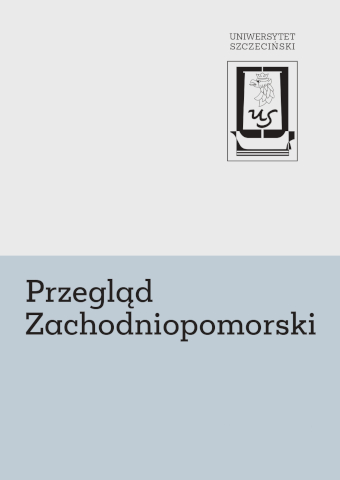| 1. | Brüggemann L.W., Ausführliche Beschreibung des gegenwärtigen Zustandes des Königl. Preußischen Herzogthums Vor- und Hinter-Pommern, T. II, Bd. 2, Stettin 1784. |
| 2. | Einwohnerverzeichnisse von Hinterpommern nach dem Steuererhebungen von 1655 und 1666, red. W. v. Schulmann. Quellen zur pommerschen Geschichte, H. 7, Köln– Graz 1966. |
| 3. | Matrikeln und Verzeichnisse der Pommerschen Ritterschaft vom XIV bis in das XIX Jahrhundert, red. R. Klempin, G. Kratz, Berlin 1863. |
| 4. | Stojentin M. v., Beiträge zur Geschichte des uradeligen Geschlechts v. Stojentin pommerschen Ursprungs, I Bd. Urkunden und urkundlichen Nachrichten, Braunschweig 1895. |
| 5. | Bagmihl J.T., Pommersches Wappenbuch, 1–5 Bd., Stettin 1843–1855. |
| 6. | Boras Z., Pomorze Zachodnie w tysiącleciu, red P. Bartnik, K. Kozłowski, Szczecin 2009. |
| 7. | Boras Z., Związki Śląska i Pomorza Zachodniego z Polską w XVI wieku, Poznań 1981. |
| 8. | Der Kreis Rummelsburg, Stettin 1938. |
| 9. | Historia Pomorza, red. G. Labuda, t. II: Do roku 1815, cz. 3: Pomorze Zachodnie w latach 1648–1815, oprac. Z. Szultka, H. Lesiński, współudz. D. Łukaszewicz, A. Wielopolski, Poznań 2003. |
| 10. | Historia Słupska, red. S. Gierszewski, Poznań 1981. |
| 11. | Kallaur K., Szkolnictwo elementarne w powiecie słupskim w drugiej połowie XVIII wieku, w: XII Konferencja Kaszubsko-Pomorska pt. Szkolnictwo i oświata na Pomorzu (XVI–XX w.), red. Z. Romanow, Słupsk 2013. |
| 12. | Ledebur L. v., Adelslexicon der preussischen Monarchie, 1–3 Bd., Berlin 1856. |
| 13. | Morre F., Die Swenzonen in Ostpommern. Aufstieg und Herrschaft 1269–1357, „Baltische Studien” 1939, Bd. 41. |
| 14. | Müller E., Die evangelischen Geistlichen Pommerns von der Reformation bis zur Gegenwart, II. Teil: Der Regierungsbezirk Köslin. Die reformierten Gemeiden Pommerns. Die Generalsuperintendenten, Stettin 1912. |
| 15. | Papritz J., Das Handelshaus der Loitz zu Stettin, Danzig und Lüneburg, „Baltische Studien” 1959, Bd. 44. |
| 16. | Popielas-Szultka B., Początki i lokacje miast na Pomorzu Sławieńsko-Słupskim do połowy XIV wieku, Słupsk 1990. |
| 17. | Puttkamer E. v., Geschichte des Geschlechts v. Puttkamer, Neustadt a. d. Aisch 1984. |
| 18. | Spors J., Rola polityczna Święców w końcu XIII i początku XIV wieku, „Roczniki Historyczne” 1980, t. 46. |
| 19. | Szultka Z., Pałubiccy – burmistrzowie, rajcy i obywatele Słupska końca XVI i pierwszej połowy XVII wieku, „Rocznik Słupski” 1979. |
| 20. | Szultka Z., Reformy podziału administracyjnego brandenbursko-pruskiej części Pomorza Zachodniego w drugiej połowie XVII i w XVIII wieku, cz. II, „Zapiski Historyczne” 2000, t. 65, z. 2. |
| 21. | Szultka Z., Świątynia na Rowokole i jej funkcje, Słupsk 2014. |
| 22. | Szultka Z., Z badań nad rodowodem i strukturą patrycjatu słupskiego w drugiej połowie XVI i pierwszej połowie XVII wieku, „Zapiski Historyczne” 1982, t. 47, z. 2. |
| 23. | Szultka Z., Zmiany w strukturze własności ziemskiej szlachty pruskiej części Pomorza Zachodniego w XVIII i w początkach XIX wieku, w: Szlachta i ziemiaństwo polskie i niemieckie w Prusach i Niemczech w XVIII–XX w. Materiały z sesji naukowej 22–24 X 1993 r. w Szczecinie, red. W. Stępiński, Szczecin 1996. |
| 24. | Wachowiak B., Konfrontacja zachodnioniemieckiej publikacji wykazów ludności wiejskiej Pomorza Zachodniego z połowy XVII w. z podstawą źródłową, „Zapiski Historyczne” 1969, t. 34, z. 1. |
| 25. | Zitzewitz W. v., Geschichte der ersten und zweiten Linie des Geschlechts von Zitzewitz (1313–1926), Stettin 1927. |







